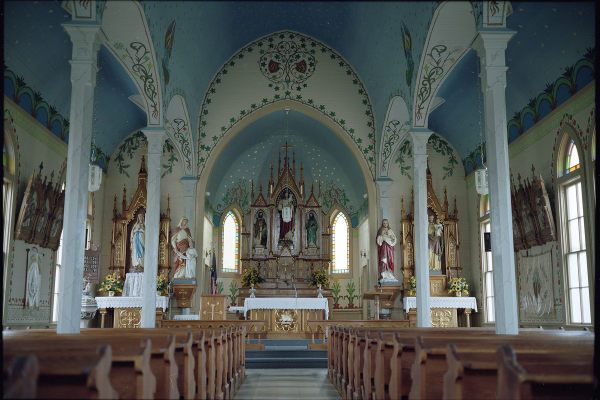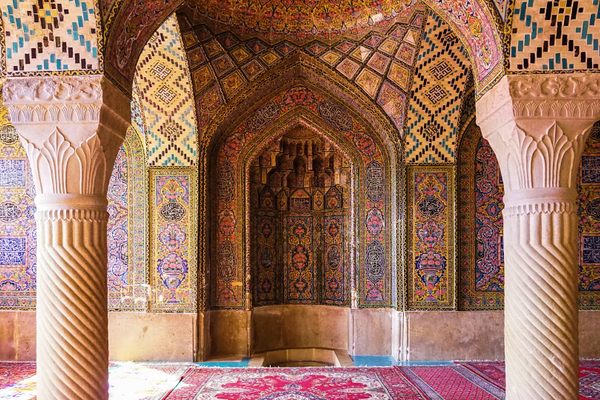Listen to the Call to Prayer in Countries Around the World
A new project collects sounds from sacred places in 34 countries.

If you were standing by the Lion’s Gate, in the Old City walls of Jerusalem, you might hear this call to prayer:
If you were standing in New Delhi, more than 3,000 miles away, you might hear this one, the same idea shaped by its location:
These are two of close to 200 sounds collected by Cities and Memory, a field recording and sound art project, for its newest and largest collection, Sacred Spaces. The collection includes sounds of prayers, bells, churches, temples, organs, and songs, recorded in 34 countries and organized both by geography and category. You can listen to calls to prayer from around the world, discover the resonances of organs across the U.K., or compare the sounds of a shamanic chant in Peru, a prayer wheel in Kathmandu, and a quinceañera mass in Mexico.
The Sacred Spaces collection began after the U.K.’s Churches Conservation Trust asked Stuart Fowkes, the project’s founder, to document some of the sounds of the churches they care for. Some of these historic churches date back to the 1100s and 1200s, and they’re no longer actively used. Fowkes would coax some sound out of the organs, some 20 feet tall, and a few times got to ring the church bell.
“You go into these old churches, and there’s just a rope,” he says. “You start to pull on it, and the whole church fills with the sound of this ringing bell. You realize that even with a single bell, it’s much harder than it looks, because you have to get the rhythm exactly right, otherwise you get this weird stuttering effect. You have to get into the groove of it. It’s surprisingly hard work.”

Fowkes realized quickly that the project of capturing the sounds of Christian spaces in England could be expanded far and wide around the world. He was expecting the project would draw out the differences among the world’s religions, but instead he found that the collection of sounds highlighted their similarities. A church bell and a call to prayer serve the same function—organizing people’s days, telling them when it’s time to pray.
At the same time, though, these sounds are specificity tied to the place where they’re from. The bells of Villa del Conte, for instance, are so familiar to the people living in this small town in northern Italy that they can distinguish the sound of that bell from any other, says Fowkes. “It’s like an auxiliary heartbeat or the fingerprint of the town,” he says.
One of the features of Cities and Memory is its remixed “memory” versions of each sound clip, reimagined by a sound artist. These versions are meant to invoke the possibilities of places meshed with memory and personality: One person’s experience of a place or sound doesn’t necessary match with another’s. Even the most universal sound is filtered through an individual experience.
The inputs we get these days are different than in the past, though, and some of the sacred sounds collected here are in danger of being drowned out. In Pendock, England, the medieval town that once surrounded the church has disappeared, and the building stands near a motorway. When Fowkes went inside the church to record its organ, the sounds of the motorway intruded on the recording, even through the stone walls of the church. And at the Westerkerk, in Amsterdam, the church bell was barely audible over the sound of the traffic.
“Think about bells in the Middle Ages,” says Fowkes. “The bell would be the loudest sound, outside the sound of a battle or an earthquake that anyone had ever heard. The bell was designed to be the loudest possible sound. Now, you go to a modern city, and the bell is barely audible over traffic.” When we listen to the world, it roars. In some of these sacred spaces, it’s still possible to hear the sounds associated with contemplation for hundreds of years.

































Follow us on Twitter to get the latest on the world's hidden wonders.
Like us on Facebook to get the latest on the world's hidden wonders.
Follow us on Twitter Like us on Facebook